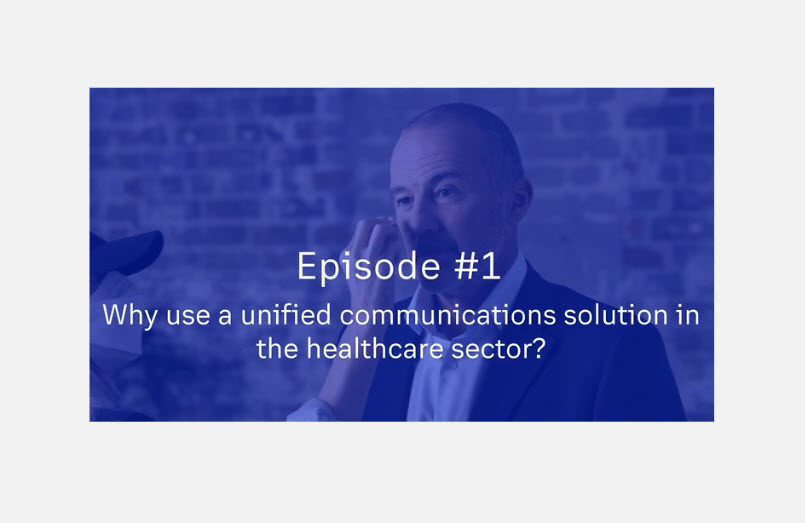What is unified communications for healthcare?
Unified Communications (UC) is a game-changing solution for the healthcare sector. UC integrates various communication channels – voice calls, video conferencing, instant messaging, file sharing – into a single, user-friendly platform. Imagine a scenario where a doctor in a bustling emergency room can instantly connect with a specialist across town via a secure video call, while simultaneously sharing a patient’s medical scans through an integrated chat window.
Benefits of unified communications for healthcare sector
In the fast-paced world of healthcare, effectiveness often outweighs efficiency. Patient outcomes and staff productivity take centre stage. Unified communications (UC) emerges as a powerful solution, linking devices and applications within healthcare organisations. Let’s explore why UC is just what the doctor ordered:
1. Enhanced collaboration and communication:
-
- UC links devices and applications, fostering collaboration and preserving knowledge flow.
- Clinicians, administrators, and care professionals can communicate effectively at every level of the healthcare environment.
2. Benefits of UC in healthcare:
-
-
Improved interactions between medical specialists:
-
– UC keeps specialists, institutions, and experts aligned on the same network, enabling efficient collaboration on complex health issues.
– Faster diagnosis, treatment, and care management result from streamlined communication.
-
-
Reduced internal costs:
-
– Smoother, faster communication saves time.
– Estimates suggest that eliminating mistakes in healthcare coordination could save the industry up to $38.2 billion annually.
-
-
Enhanced patient care:
-
– UC enables access to telehealth opportunities, allowing patients to seek support wherever they are.
– AI solutions can anonymise and collect crucial information, improving patient care without compromising compliance.
-
-
Efficient data management:
-
– UC streamlines data sharing and management, ensuring professionals have access to critical information for decision-making.
– Solutions can remain compliant with patient privacy and guidelines
What key challenges does the healthcare sector face?
In this video, Steve Saunders, Enterprise Account Manager – Healthcare at RingCentral explains why use a unified communications and contact centre solution for healthcare sector and the key challenges of the industry.
Key challenges for the healthcare sectors:
- Aging population: as the population ages, healthcare systems face a surge in demand for chronic disease management and geriatric care. This requires adapting resources and workflows to cater to the specific needs of an older generation.
- Higher patient expectations: patients are increasingly informed and empowered, demanding more personalised care options, transparent communication, and convenient access to services. Meeting these expectations requires a shift towards patient-centric healthcare delivery.
- Outdated technologies: fragmented communication systems and reliance on legacy technologies hinder efficiency and collaboration within healthcare institutions. Modernising infrastructure is crucial to keep pace with evolving healthcare needs.
- Slow innovation adoption: the healthcare sector can be slow to embrace new technologies due to concerns about security, cost, and integration with existing systems. This can hinder progress and limit the potential for improved patient outcomes.
Connected telehealth solution from RingCentral
Australia’s healthcare sector is renowned for its quality and innovation. But in a world increasingly reliant on efficiency and accessibility, many institutions are grappling with outdated communication systems. Fragmented communication between doctors, nurses, specialists, and patients can lead to delays, errors, and ultimately, a decline in the quality of care.
This is where Unified Communications (UC) technology from RingCentral steps in as a game-changer for Australian healthcare. UC integrates various communication channels – voice calls, video conferencing, instant messaging, and file sharing – into a single, user-friendly platform. Imagine a doctor in Melbourne seamlessly consulting with a specialist in Perth via a secure video call, while simultaneously sharing patient X-rays through an instant messaging thread. This is the power of UC in action.
Updated 24 Jul, 2024




